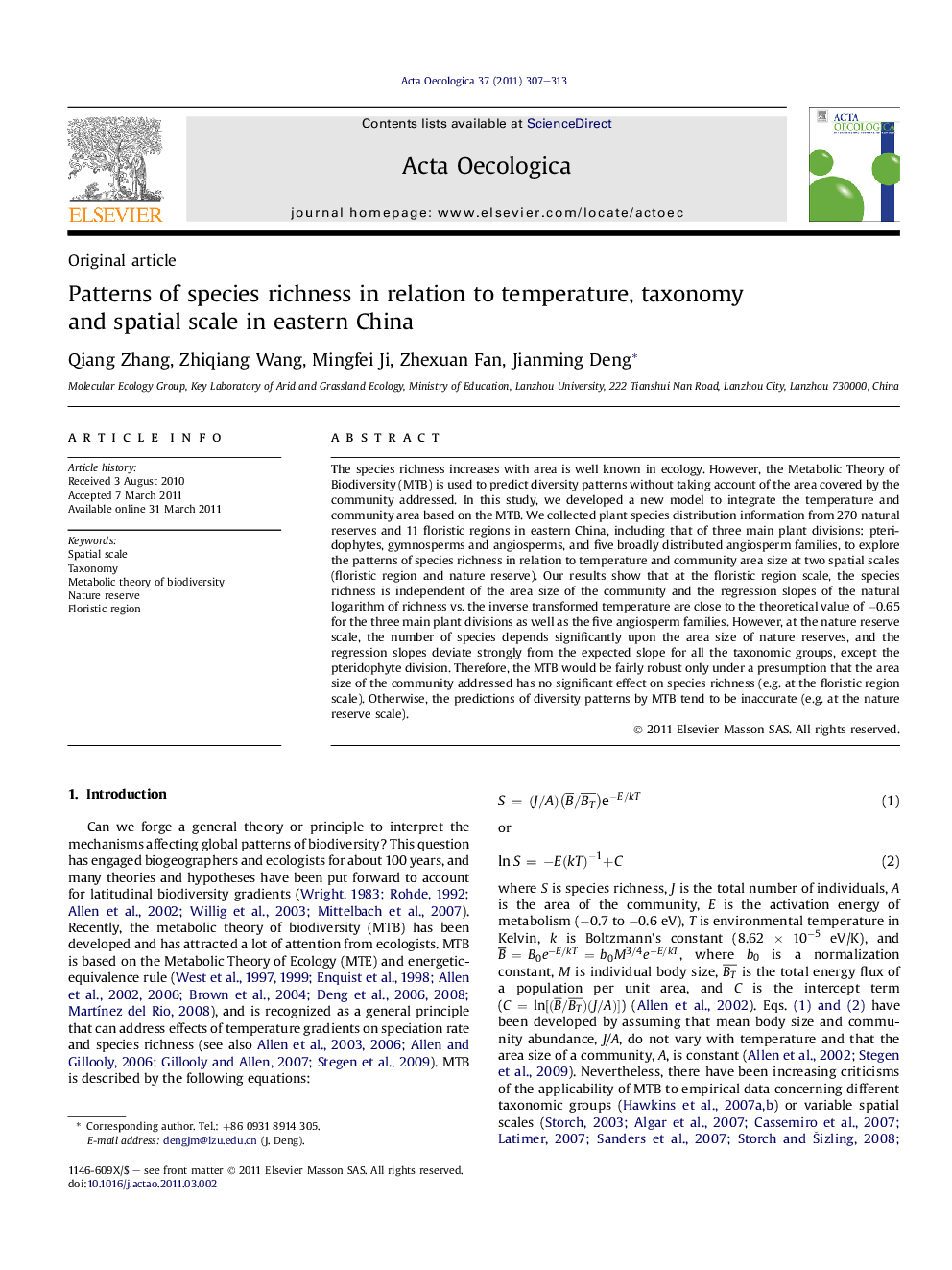| Article ID | Journal | Published Year | Pages | File Type |
|---|---|---|---|---|
| 4381501 | Acta Oecologica | 2011 | 7 Pages |
The species richness increases with area is well known in ecology. However, the Metabolic Theory of Biodiversity (MTB) is used to predict diversity patterns without taking account of the area covered by the community addressed. In this study, we developed a new model to integrate the temperature and community area based on the MTB. We collected plant species distribution information from 270 natural reserves and 11 floristic regions in eastern China, including that of three main plant divisions: pteridophytes, gymnosperms and angiosperms, and five broadly distributed angiosperm families, to explore the patterns of species richness in relation to temperature and community area size at two spatial scales (floristic region and nature reserve). Our results show that at the floristic region scale, the species richness is independent of the area size of the community and the regression slopes of the natural logarithm of richness vs. the inverse transformed temperature are close to the theoretical value of −0.65 for the three main plant divisions as well as the five angiosperm families. However, at the nature reserve scale, the number of species depends significantly upon the area size of nature reserves, and the regression slopes deviate strongly from the expected slope for all the taxonomic groups, except the pteridophyte division. Therefore, the MTB would be fairly robust only under a presumption that the area size of the community addressed has no significant effect on species richness (e.g. at the floristic region scale). Otherwise, the predictions of diversity patterns by MTB tend to be inaccurate (e.g. at the nature reserve scale).
